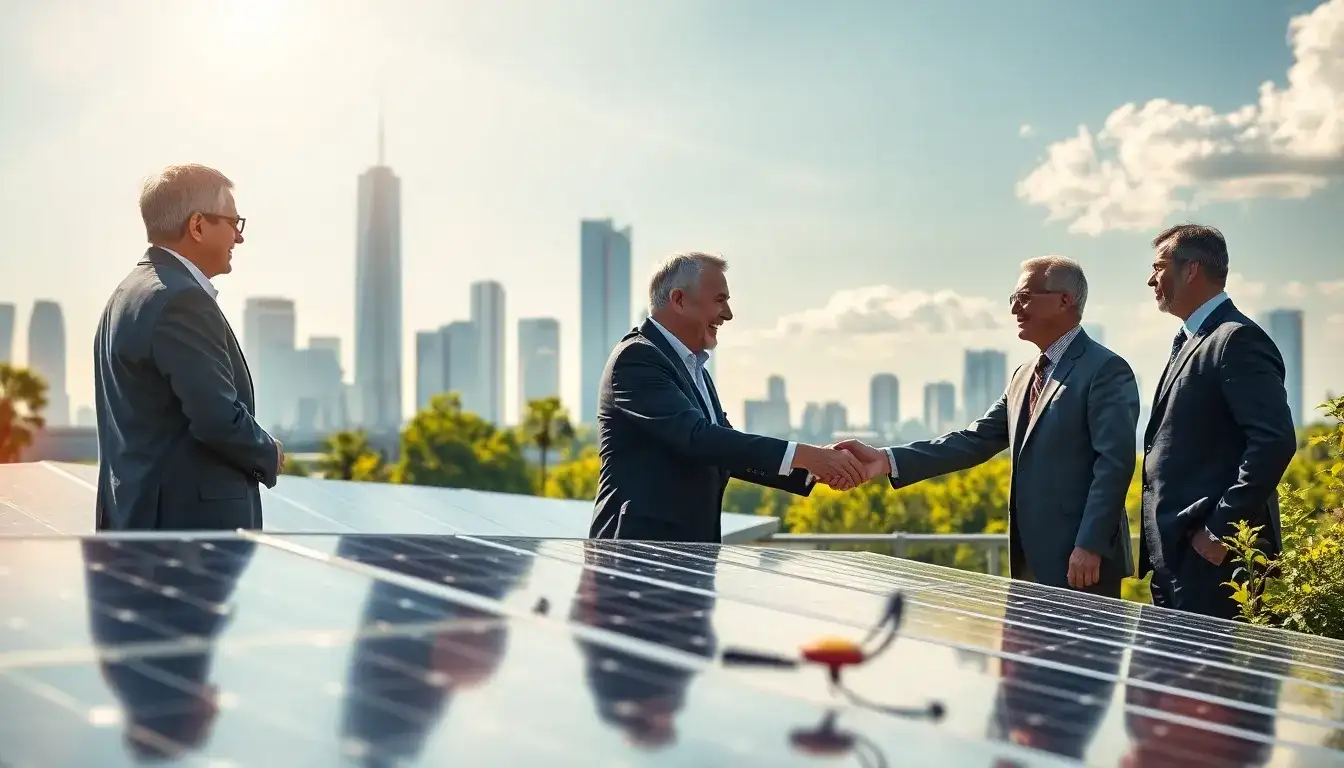
Advancements in Solar Energy: Government and Enterprises Accelerate Progress
On November 15, 2024, the Shanghai Municipal Development and Reform Commission issued the “2024 Competitive Configuration Work Plan for Offshore Photovoltaic Projects,” outlining seven offshore photovoltaic projects designed for competitive allocation. According to the scoring criteria, the use of high-efficiency modules and inverters will earn additional points, with modules achieving a conversion efficiency of 24% receiving full marks.
Two months later, the Shaanxi Provincial Development and Reform Commission launched the “Leader Plan,” which sparked significant discussion in the industry. On January 9, 2025, the Commission announced a notice regarding the development of wind and photovoltaic power projects in Shaanxi Province for 2025, specifying an additional 10GW allocation for wind and solar power. It also introduced a 2GW photovoltaic “Leader Plan,” requiring modules to achieve a conversion efficiency of at least 24.2%. This initiative signifies that Shaanxi’s 2GW photovoltaic plan will raise the entry standards for products by limiting them to high-efficiency components, steering the industry towards new technologies that offer higher efficiency at lower costs, and setting a benchmark for high-quality development in the photovoltaic sector.
The release of these two plans not only represents a concrete effort to break the cycle of internal competition but also serves as a crucial step toward promoting high-quality development in the photovoltaic industry. By establishing high technical standards, these initiatives directly encourage companies to focus on technological innovation and capacity upgrades, optimizing the competitive landscape. Through market competition and the selection of superior technologies and products, high-efficiency and advanced solutions will be widely adopted, while inefficient and outdated capacities will gradually be phased out. For instance, the “Leader Plan” from 2015 to 2017 successfully facilitated the transition from multi-crystalline to monocrystalline technology, and the recent initiatives from Shanghai and Shaanxi are expected to promote the widespread adoption of efficient technologies such as Bifacial (BC) and Heterojunction (HJT) cells.
Expansion of the BC Sector: Driven by Technological Innovation and Market Breakthroughs
In 2025, the photovoltaic industry finds itself at a pivotal point of technological iteration and supply-side reform. As TOPCon technology faces challenges of overcapacity and homogeneous competition, BC (Bifacial) technology, with its high efficiency, low degradation, and excellent performance in low-light conditions, emerges as a new direction for the industry. From the Tokyo International Solar Photovoltaic Expo (PV EXPO 2025) to exhibitions in Jinan, China, the BC technology sector is rapidly expanding, with several leading companies launching new products, indicating that BC technology is transitioning from a niche to a mainstream solution.
The PV EXPO 2025 was held from February 19 to 21 at the Tokyo Big Sight International Exhibition Center. TCL Solar, a subsidiary of TCL Zhonghuan, showcased its refreshed brand image and introduced two new BC products. The first, a bifacial module, utilizes the industry-standard 2382*1134mm size, featuring 66 half-cut 182*210mm BC cells, with a maximum power output of 665W and a conversion efficiency of 24.6%. The second, a smaller monofacial module, contains 54 cells, achieving a maximum power output of 470W and a conversion efficiency of 23.6%. Additionally, leading manufacturer JA Solar debuted its BC module products at the expo, with three monofacial models all exceeding a conversion efficiency of 24%.
On March 5, the exhibition in Jinan, China, marked a significant milestone for BC technology. In addition to LONGi and Aiko, the pioneers in BC technology, TCL Solar, GCL, Tongwei, Xuhua, and Runma also showcased their latest BC products, ending the previous scenario where LONGi and Aiko were the sole leaders in the BC space.
Undoubtedly, the proliferation of BC technology is attributed to its technological advantages and the industry’s pressing need to move away from homogeneous competition. Furthermore, significant breakthroughs in the bidding market for BC technology are gaining momentum. In the first quarter of this year, two major BC projects ignited industry interest; in January, LONGi won a bid for a 500MW project with Inner Mongolia Energy Group, marking the largest single BC project in the country. In March, Aiko secured the first bid for a 1GW project with Datang, further expanding its market share in BC technology. These successful bids indicate that BC technology is increasingly gaining recognition from investors, establishing itself as a preferred option for photovoltaic projects.
Forecasts from various institutions regarding the market share of BC cells are optimistic, with expectations of reaching a 10%-15% share by 2025 and potentially rising to 20%-50% by 2030, solidifying its status as one of the mainstream technologies in the photovoltaic market. This growth will depend on a combination of technological advantages, policy support, and strategic positioning by enterprises.
From policy guidance to corporate innovation, the photovoltaic industry is entering a new stage of high-quality development. The industry is shifting from low-price, internally competitive practices to healthy development driven by technological innovation. In the future, with simultaneous advancements in technology and market breakthroughs, the photovoltaic industry is poised for a robust rebound, providing strong support for achieving carbon neutrality goals.







